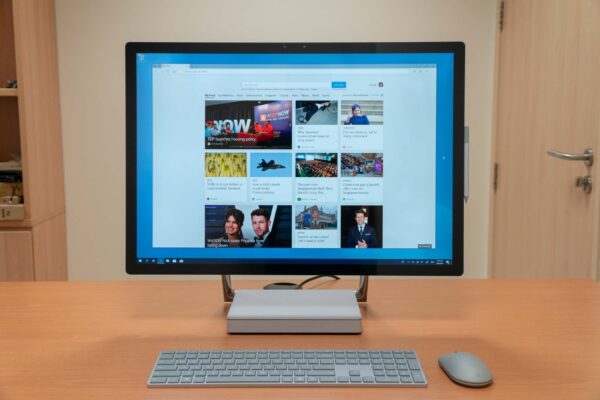
Desktop computers are mostly boring to look at. Even all-in-one setups aren’t particularly interesting. Microsoft surprised us with their exceptionally beautiful Surface Studio at the end of 2016, and delivered a refreshed and still fascinating Surface Studio 2 again two years later.
It’s easy to see Microsoft’s Surface Studio 2 to be the Windows version of an Apple iMac. That, however, would not do the Surface Studio 2 justice. It’s a whole lot more than simply slapping on Windows 10 on an iMac hardware look-alike. The Surface Studio 2 is quite different.
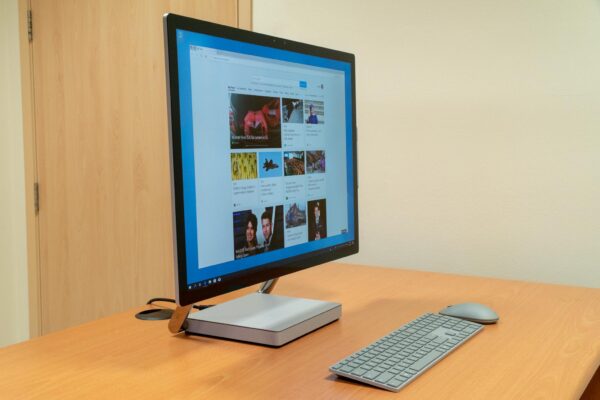
In terms of physical appearance, the Surface Studio 2 hasn’t changed from the earlier Surface Studio. Microsoft didn’t need to change the look. Two years later, this is still the most impressive all-in-one PC there is out there.
The Surface Studio 2 definitely leaves a very positive first impression. It has a modern, elegant, minimalist design that is absolutely beautiful. That’s just the first look.
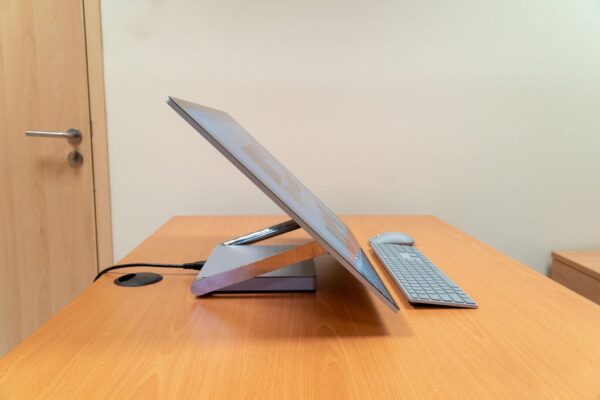
Then, you realise that gorgeous all-glass 28-inch display can be tilted. It’s not just a normal tilt like what a typical monitor can do. The Surface Studio 2’s display tilts far more, so much more, and goes so far back it’s almost flat. This all-in-one transforms from a desktop PC to a digital drawing surface.
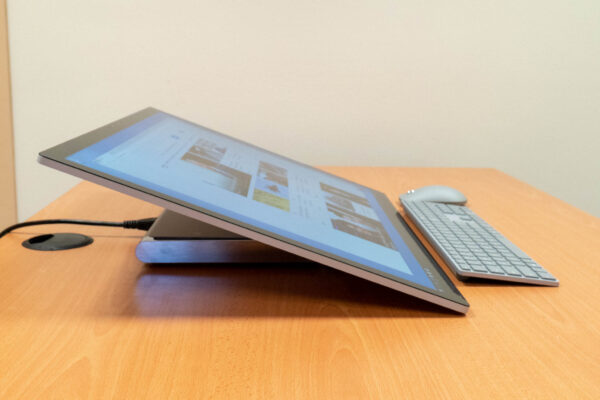
The transformation is stunning. Giant display one moment, giant tablet the next moment. The zero gravity hinge makes it possible to effortlessly position the display at any angle your heart so desires.
That display is just 12.5 mm thick, the thinnest ever built for an all-in-one PC. This is possible because the PC components are all built into the base unit attached at the other end of the pair of tilting arms.
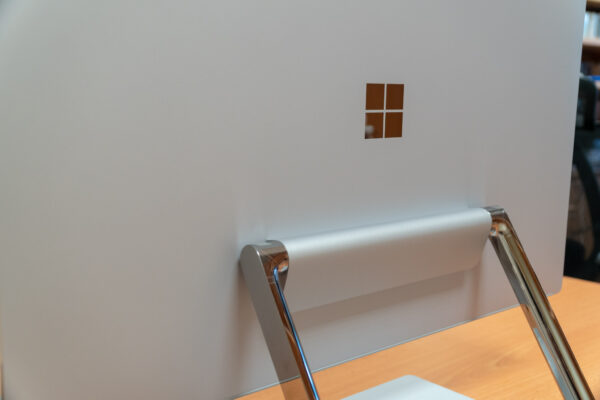
The tilting display is nice, though I did wish that Microsoft had gone one step further to also include swivel, so that I can turn the monitor from side to side. (Not rotate, which is to turn from landscape to portrait.)
The base unit, measuring 250 x 220 x 32.2 mm, is awfully compact considering all the PC components packed into it. This PC is no slouch, although I am a little disappointed that the refreshed Surface Studio 2 hardware specifications seem to be updated to less than the most current.
Although the Surface Studio 2 only offers one 7th generation Intel Core processor configuration, the i7-8720HQ offers quite respectable performance. You have choose 16 or 32 GB of RAM. The 16 GB RAM model is offered with NVIDIA GeForce GTX 1060 with 6 GB GDDR5 memmory, and 1 TB of SSD storage. The 32 GB RAM model is offered with NVIDIA GeForce 1070 with 6 GB GDDR5 memory, and either 1 TB or 2 TB of SSD storage.
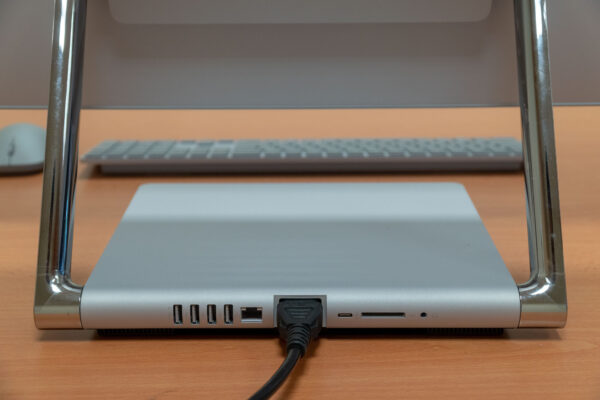
On the base unit, you’ll find 4x USB 3.0 ports, one Gigabit Ethernet port, a USB Type-C port, a full-sized SD card slot, and a headphone port. The AC cord is connected directly into the bass unit, so there is no separate power brick to deal with. The USB Type-C port does not support Thunderbolt 3, but you can use a HDMI adapter to connect to an external display.
The Surface Studio 2 also offers 802.11ac, Bluetooth 4.1, and Xbox Wireless built-in support.
Coming back to that gorgeous display again, that massive 28-inch offers 4500 x 3000 pixel resolution. Yes, this is more than 4K Ultra HD, although not quite 5K. It’s also a 3:2 aspect ratio display, something that Microsoft also adopts on their other Surface devices. Although it might not match the aspect ratio desired for watching movies, this is very suited for getting work done.
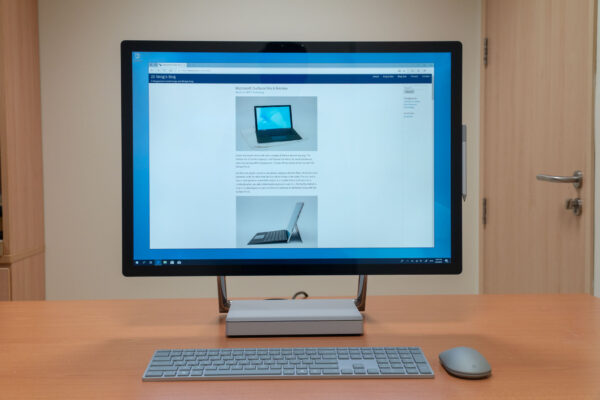
This PixelSense display, as Microsoft calls it, is beautiful. I was immediately very impressed with its colours. I didn’t need my Spyder5PRO colourimeter to tell me, but for the sake of benchmark numbers, this display does 100% sRGB, 84% NTSC, and 87% AdobeRGB colour gamut coverage. Microsoft says these displays are individually colour calibrated. You can also choose different display profiles: sRGB, DCI-P3, and Vivid.
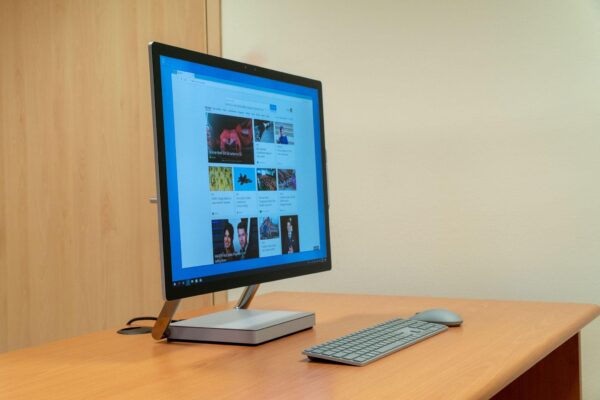
The PixelSense display supports 10 point multi-touch, as well as pen input. The Surface Pen is included in the box. Apart from the much larger surface area to work on, these aren’t different from, say, the Surface Pro 6. Like on the Surface Pro 6, the Surface Pen can be attached magnetically to the side of the display.
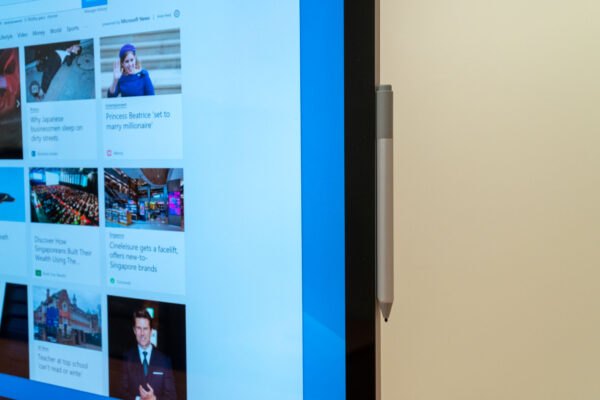
The most exciting thing, though, is about the new input peripheral that Microsoft has introduced with the original Surface Studio in 2016. Although the Surface Dial also works on some other Surface devices, it really works best with the large displays on the Surface Studios. The Surface Dial is placed on the screen, and its wheel is used to interact with on-screen controls, giving artists, for example, the ability to choose pen type, colour, or thickness. These functions can be app independent, but apps can also customise the wheel’s functions.
Microsoft did not send the Surface Dial for my review, but having watched it in action, I am quite certain that some professionals will find this peripheral highly useful in their work. The Surface Dial is the first time in a very long while we’re seeing a new category of input peripheral. I should note that the Surface Dial is only useful when the display is much more horizontal than vertical, otherwise it would just slide off. You can use the Dial off-screen, though.
Above the PixelSense display, the Surface Studio 2 has a 5.0 MP camera with 1080p video support and dual microphones. The camera supports Windows Hello face authentication.
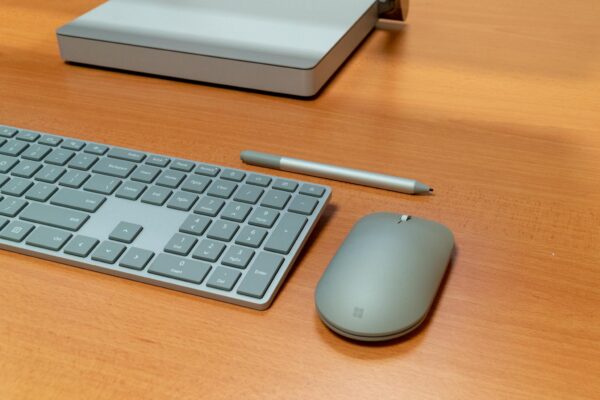
The Surface Keyboard and Surface Mouse are included in the box. They are all connected via Bluetooth, so you can have a very nice, clean, desk without any wires. The full-sized low-profile chiclet keyboard is comfortable to type on. The mouse is mostly good, but I don’t like how the scroll wheel doesn’t scroll as easily as I would prefer it to.
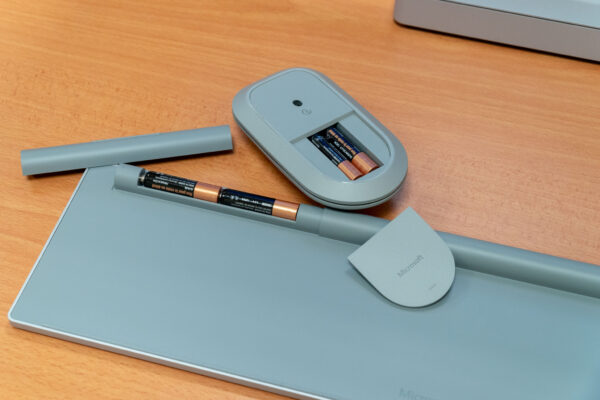
I said earlier that the Surface Studio 2’s performance is no slouch. The PCMark 10 benchmark scores are: 6010 (overall), 7874 (essentials), 6526 (productivity), 6507 (digital content creation), and 10551 (gaming). Geekbench 4 scores, which primarily are focused on processor, are not so stellar given the use of previous generation Intel Core processors, but at 4941 (single-core) and 16308 (multi-core), it is still respectable. The compute score at 16308 reflects the capabilities of the NVIDIA GeForce GTX 1070 GPU.
I ran a few more benchmark tests with 3DMark. Here are some of the scores:
- TimeSpy: 5153
- TimeSpy Extreme: 2385
- CloudGate: 26991
- Sky Driver: 28717
- FireStrike: 12521 (did not run at full resolution)
With the NVIDIA GeForce GTX 1070, you won’t have any problems running modern AAA games on the Surface Studio 2.
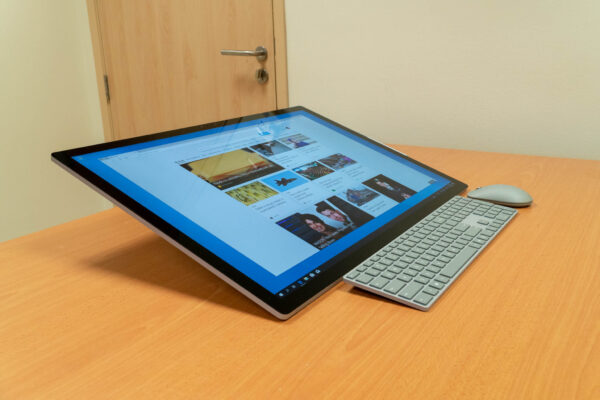
Overall, the Surface Studio 2 is absolutely phenomenal. With the tilt-to-flat display, touch, and pen support, this is definitely not just a Windows version of an iMac. The design is gorgeous. The display is absolutely lovely, especially for professionals who require colour accuracy in their work. Despite the slightly older processor, performance is still great.
The biggest challenge, however, with the Surface Studio 2 is its price. My review unit, configured with 32 GB RAM and NVIDIA GeForce GTX 1070, is priced at S$6,688. At this price, the Surface Studio 2 is out of reach of most consumers. Some businesses, however, may be able to find the expense justifiable.
Conclusion
The Microsoft Surface Studio 2 is an absolutely gorgeous all-in-one Windows PC that transforms from desktop PC to digital drawing surface.
Pros:
- Beautiful, elegant, design
- Transforms from desktop PC to digital drawing surface
- Excellent performance
- Excellent display
Cons:
- Hardware specs are of less current generation
1 thought on “Microsoft Surface Studio 2 Review”
View Comment Policy